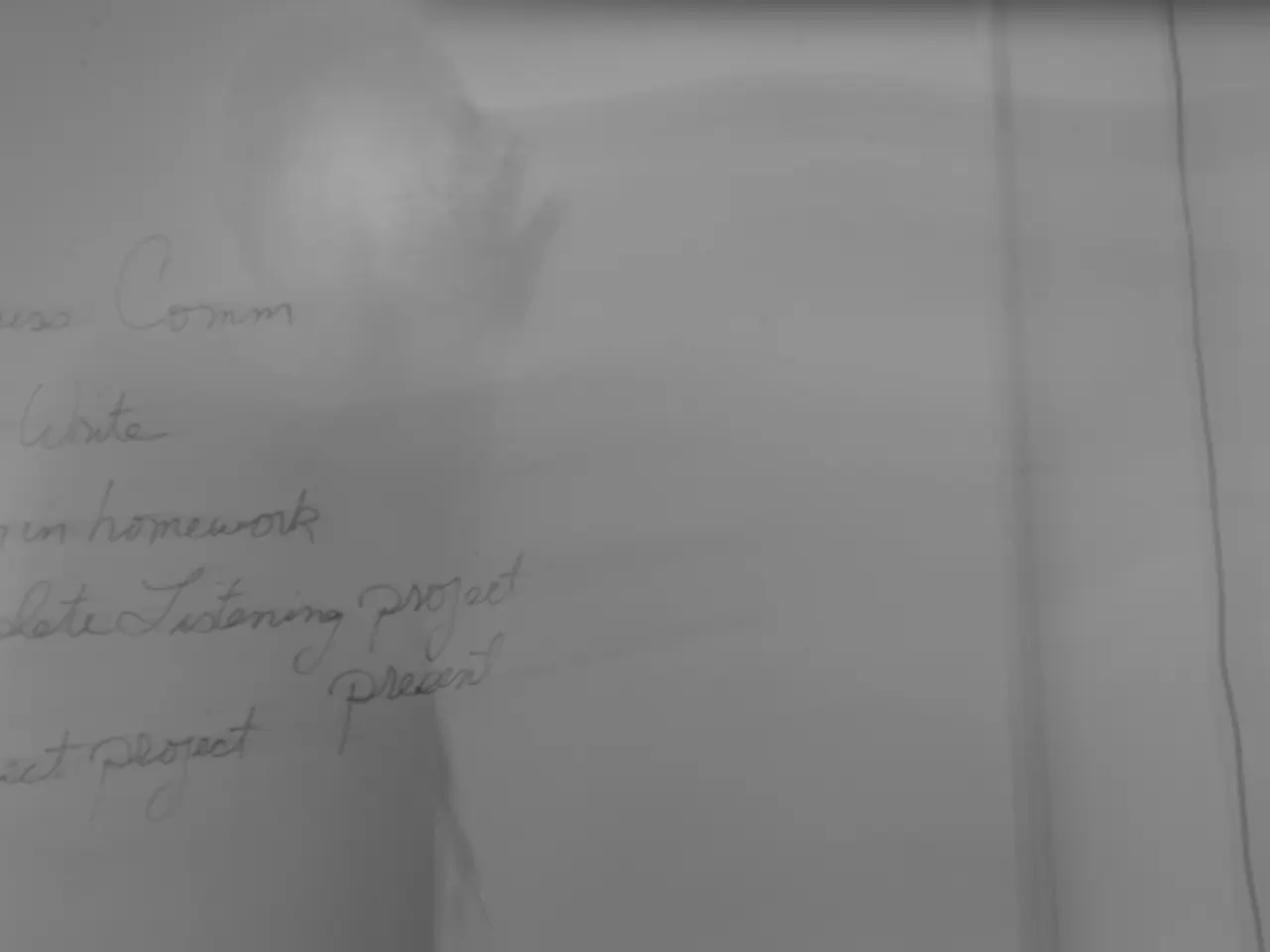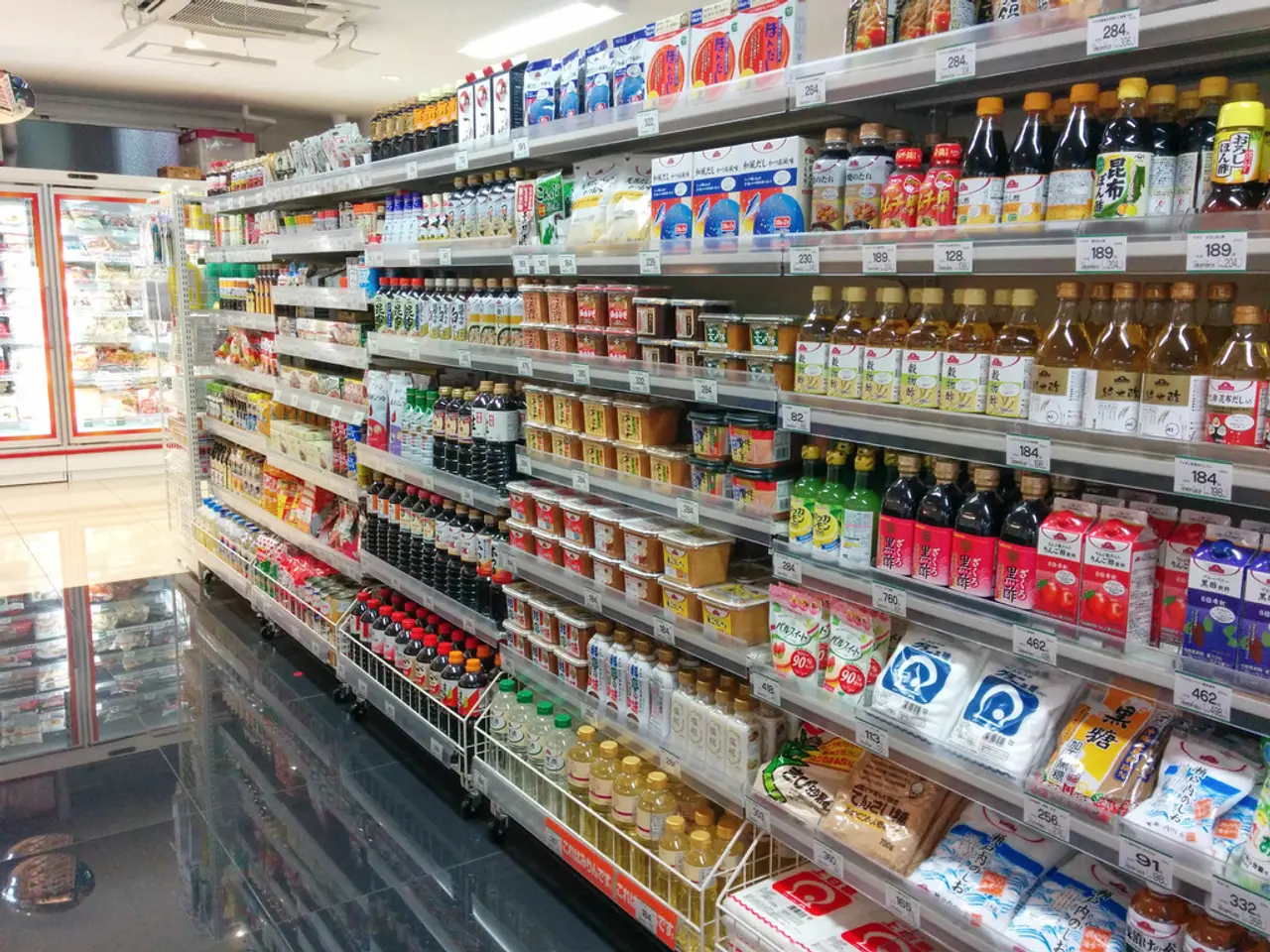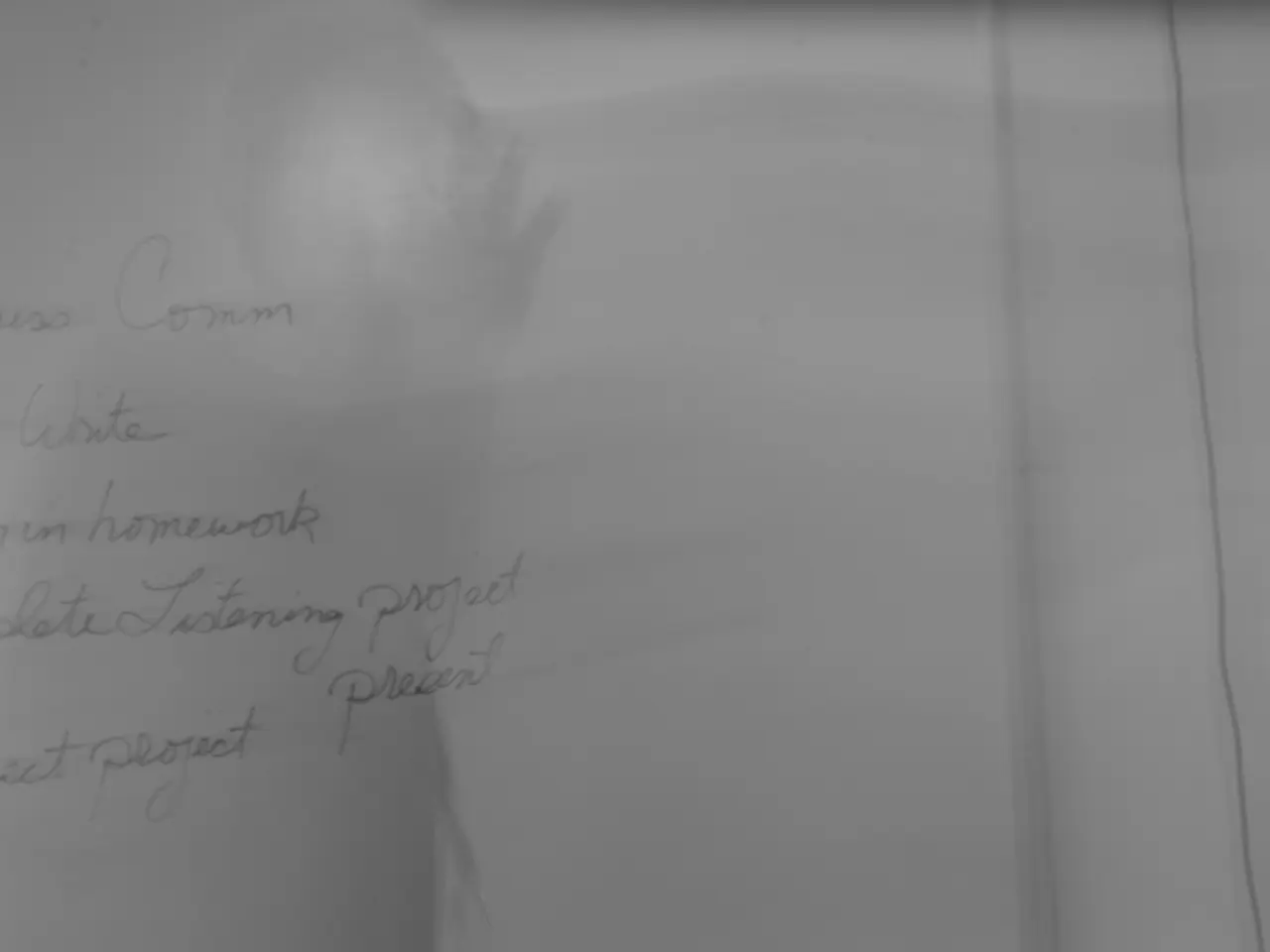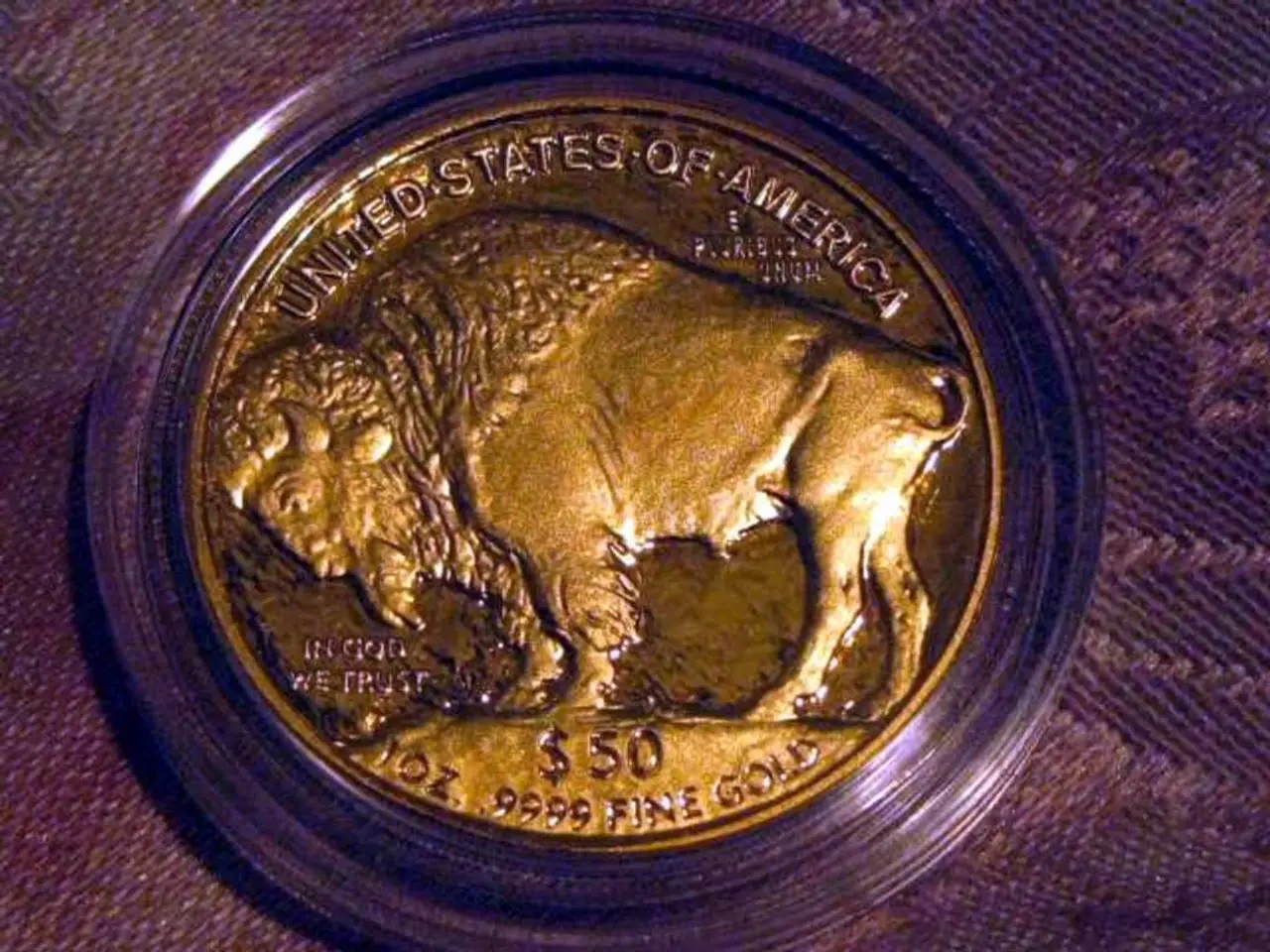Trump's Tariffs: A Storm Cloud Over the Federal Reserve and the U.S. Economy
Federal Reserve's Decisions Eclipsed by Trump's Trade Taxes - U.S. Federal Reserve's actions eclipsed by Trump's tariff decisions
In a world where Donald Trump's imposed and threatened tariffs dominate the economy conversation, the Federal Reserve faces a precarious balancing act. As the world's largest economy's central bank, it struggles to keep inflation at bay and maintain a stable labor market. But, the Fed is bracing itself for two crystal-clear outcomes from Trump's tariffs: inflation will surge, and economic growth will falter.
Jerome Powell, the Federal Reserve's chairman, has left neither room for ambiguity nor debate, stated, "'Everyone I know is forecasting a significant increase in inflation in the coming months due to tariffs, because someone has to pay for them.'" He issued a stern warning that consumers will bear the brunt of the tariffs' fallout.
Powell: Inflation's Impacts, Explained
"The tariffs' outcomes will depend, among other things, on their intensity," Powell elaborated. While initial predictions are slightly lower on tariffs' scale, uncertainty abounds. "Regardless, higher tariffs are likely to inflate prices and stifle economic growth," Powell warned.
In light of such an impending crisis, the Federal Reserve stationed itself as a stonewall against Trump's demands for swift credit easing. The interest rate remains poised between 4.25% to 4.5%, refusing to give in to the President's relentless pressure. The uncertainty over the economic outlook remains alarmingly high, according to the Fed, validating the decision to keep interest rates intact.
Interest Rate: The Federal Reserve's Primary Tool
The rate is the Federal Reserve's primary instrument for attaining its fundamental objectives: curbing inflation and maintaining low unemployment levels. As a consequence, the interest rate influences commercial banks' borrowing costs from the central bank, which in turn affect consumers and businesses alike, such as mortgage, auto loans, or financing.
The Fed now anticipates a more modest economic growth this year than previously estimated. It projects a growth rate of 1.4% compared to its earlier projection of 1.7%. Inflation is projected to be a daunting 3.0% compared to the earlier estimate of 2.7%.
Why Trump Wants Lower Interest Rates?
The Federal Reserve's autonomy is enshrined by law; however, Trump's constant calls for lower interest rates to stimulate the economy further are incessant. To emphasize his demand, Trump frequently lashes out at Powell personally, denouncing him as a "fool" or "dumb." He even recommended that Powell follow the example of the European Central Bank, which recently slashed its benchmark interest rate to 2.0%.
From the Federal Reserve's viewpoint, there's currently no pressing necessity to alter the interest rate. The inflation rate is close to its 2% target, and the labor market remains robust. Furthermore, the future economic outlook is clouded by the uncertainty resulting from tariffs.
Trump's tariffs have been a source of considerable stress and turmoil in the U.S. economy since January when he started imposing high tariffs on goods from various nations, making imports more expensive.
- Donald Trump
- Federal Reserve
- Tariffs
- Jerome Powell
- Inflation
- Central bank
- U.S. economy
- United States
- Labor market
- Federal Reserve System
- Republican
- Interest rate
The Grim Reality of Trump's Tariffs: A Closer Look
It's evident that Trump's tariffs are instigating massive shifts in inflation and economic growth dynamics in the United States. Recent economic studies and forecasts paint a disconcerting picture.
Impact on Inflation
Tariffs serve as surcharges on imports, thereby boosting the price of foreign goods. As a result, businesses and consumers experience escalated prices for affected products. J.P. Morgan points out that the new tariff on Chinese goods, reaching over 100% in certain sectors, amounts to a staggering $400 billion tax hike on U.S. households and businesses before substitution. This directly raises the cost of imports and escalates consumer prices, contributing to an increase in core consumer price inflation (CPI).
Impact on Economic Growth
Economic expansion is predicted to dwindle as a result of tariffs. The OECD anticipates U.S. GDP growth to plummet from 2.8% in 2024 to 1.6% in 2025 and 1.5% in 2026. Rising trade costs have been identified as the primary catalyst for this slowdown. Reduced consumer spending due to higher prices for imports, battered business investment due to increased input costs, and retaliatory tariffs from trading partners that impact U.S. exporters all contribute to the economic downturn.
Analysts caution that the tariffs are causing job losses, market volatility, and dwindling investor confidence. Legal challenges to the tariffs add to the uncertainty, which intensifies investment and consumption decisions' chill.
The Federal Reserve's Stand
Although specific statements from the Federal Reserve concerning these specific tariffs are scarce, general economic principles and recent analysis suggest that the Fed is likely to be monitoring the situation carefully. Higher tariffs can fuel inflationary pressures, compelling a more aggressive monetary policy stance if inflation targets are threatened. Conversely, the slowdown in economic growth and detrimental effects on employment may necessitate a more lenient approach. The overall uncertainty and volatility emanating from the tariffs complicate the Fed's decision-making and could delay or dilute responses until the impact becomes clearer.
Key Takeaways
- Inflation skyrockets as tariffs escalate import costs, impacting both businesses and consumers.
- Economic growth falters under the mounting pressure of elevated trade costs, leading to a slower GDP expansion.
- The Federal Reserve grapples with the daunting task of balancing inflation risks against slowing growth and labor market implications, complicated by pervasive uncertainty and volatility.
- The Federal Reserve Chair, Jerome Powell, has stated that everyone he knows is predicting a significant rise in inflation due to Trump's tariffs, with consumers being the ones to bear the brunt of the tariffs' fallout.
- As a consequence of Trump's tariffs, the Federal Reserve anticipates a more modest economic growth this year than previously estimated, with inflation projected to be 3.0% compared to the earlier estimate of 2.7%.
- The tariffs' impact on inflation will depend on their intensity, but higher tariffs, as instigated by Trump, are likely to inflate prices and hinder economic growth.








